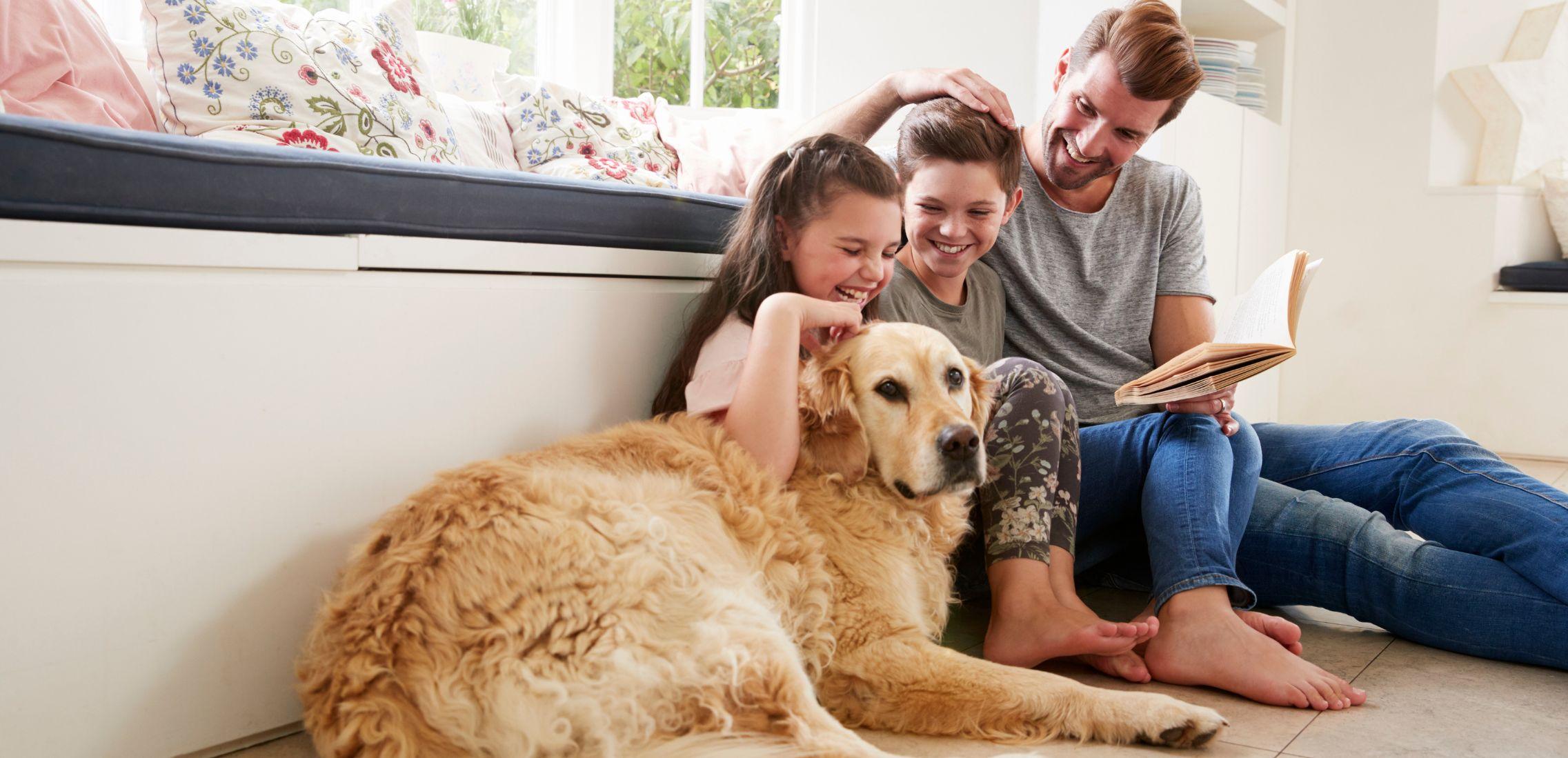Your Cart is Empty
Get Up To 35% OFF & Free Delivery
Get Up To 35% OFF & Free Delivery
Get Up To 35% OFF & Free Delivery

When it comes to our female furry friends, one question that occasionally pops up is do dogs get menopause like humans. Especially if your female dog is reaching an older age or you’re a breeder and need to be prepared; it's essential to recognize the differences between human and canine reproduction to ensure proper care for our dogs.
So, let’s delve into the science and find out if our four-legged companions ever get to bark goodbye to their reproductive years.
Spoiler: the answer is “no” they don’t go through menopause. But learn exactly why below!
Menopause has in the past been a bit of a taboo topic, so we’re here to lift the curtain on exactly what menopause is.
The word menopause refers to a woman’s last or final menstrual period, usually between the ages of 45 and 55.
When a woman has had no periods for 12 consecutive months, she is considered to be menopausal. This occurs due to a decline in hormone production, particularly estrogen, and marks the end of a woman’s reproductive years.
So long story short, it’s when women stop having periods and can no longer get pregnant. Not so taboo to talk about, right?


All female dogs go through a cycle called estrus, commonly referred to as being "in heat." According to Dr. Milan Hess, DVM, the canine estrous cycle includes four stages: proestrus, estrus, diestrus, and anestrus.
These stages span approximately 6 to 7 months in total, with the actual "heat" lasting about 2 to 3 weeks (Hess, 2023).
Proestrus: During this phase, which lasts about 9 days, the female dog will have a swollen vulva and begin bleeding. This is often mistaken for a period but differs from the human menstrual cycle.
Estrus: Following proestrus, estrus lasts for 5 to 13 days. This is when the female is receptive to males and can become pregnant. Bleeding may continue during this phase.
Diestrus: This phase lasts about 2 months. If the dog is not pregnant, her body will gradually return to normal. Hormone levels stabilize, and there are no visible signs of heat.
Anestrus: The final stage, anestrus, is a period of sexual inactivity that lasts until the next heat cycle begins. This phase can last several months, depending on the individual dog.
According to PetMD, some common signs your dog is in heat include:
More frequent urination
Swollen vulva and licking of genitals
Increased interest in male dogs
Increased vocalization
Sideways tail movements
Restless and mood swings
Nesting behaviors

See How Dog Owners Are Using These Leak-Free Potty Pads to Keep Their Homes Clean and Pups Happy
4.7 ⭐⭐⭐⭐⭐
Over 100,000 Dog Owners Saved Money With Potty Buddy™
The washable pee pads that absorb anything your dog throws at them, while keeping your floors and furniture stain-free.
✅ Super Absorbent and Leak-Proof
✅ Great for Potty Training
✅ Ideal for Puppies and Older Dogs
✅ Washable and Reusable For Years
✅ Save over $400/year by not buying disposables
-60 Day Money Back Guarantee-

⭐⭐⭐⭐⭐
-Diana D.
These pads are a life saver for my kitchen floor and bedroom carpet! Just ordered 2 more!




You may or may not be wondering if spaying your dog is the right solution, especially if you’re not planning to breed your dog. And the simple answer is it very much depends on your personal preferences, although there are pros and cons claimed for and against spaying.
In short, spaying your dog is a surgical procedure (also known as an ovariohysterectomy) to remove a female canine’s ovaries and uterus. According to The Spruce Pets, spayed dogs who have had a complete ovariohysterectomy will not have heat cycles, not bleed vaginally, are unable to become pregnant, and cannot develop diseases of the uterus including infections known as pyometra.
By eliminating hormonal fluctuations associated with the estrous cycle, spaying may contribute to a more stable temperament and decrease the likelihood of certain dog behavioral issues.


Here’s where it gets interesting: dogs do not go through menopause.
While female dogs' reproductive cycles do change as they age, they don't undergo a complete cessation like human females. A study published in Theriogenology (Johnston et al., 2001), indicates that although fertility declines with age due to fewer viable eggs and changes in reproductive organ health, female dogs do not stop having estrous cycles entirely.
Essentially, a senior dog will continue to go into heat, albeit less predictably and often with less intensity. This decline in fertility is due to a reduction in the number of viable eggs and the overall health of the reproductive organs, but it doesn’t equate to menopause as seen in humans.
So as we spoiled at the beginning of this blog, female dogs do not go through menopause. Fascinating, right?
If you notice that your dog's heat cycle has suddenly stopped or become irregular, it could indicate underlying health issues. Conditions such as ovarian cysts, tumors, hormonal imbalances, or other reproductive problems can disrupt normal cycles, which is why it's essential to consult a veterinarian if you observe any changes in your dog's cycle.
A study published in the Journal of Veterinary Internal Medicine highlights the importance of monitoring and managing these hormonal changes to maintain optimum health, especially in senior dogs (Peterson et al., 2007).
So if you’re at all concerned about your dog, our recommendation is to book in with a trusted veterinarian ASAP just to ensure it’s not something more serious.

The answer to the question “do dogs go through menopause?” is ultimately a simple no. But while female dogs don’t experience menopause, their reproductive health does change as they age. Understanding these changes and providing appropriate care ensures that your canine companion remains healthy and happy throughout their golden years.
Remember, a healthy dog is a happy dog, and that’s something to wag your tail about!
As we mentioned previously, if you’re at all concerned or worried about your dog or would like advice on getting your female dog spayed, book in for a consultation with a qualified veterinarian for personalized advice.
Hess, M. (2023). "The Canine Estrous Cycle: Being in Heat." Retrieved from Veterinary Partner.
Johnston, S. D., Root Kustritz, M. V., & Olson, P. N. S. (2001). Canine and Feline Theriogenology. Theriogenology.
Peterson, M. E., Ward, C. R., & Melian, C. (2007). Hypothyroidism in Dogs: Diagnosis and Treatment. Journal of Veterinary Internal Medicine.
Check Out Our Most Popular Content